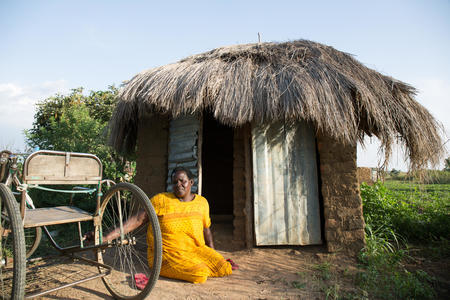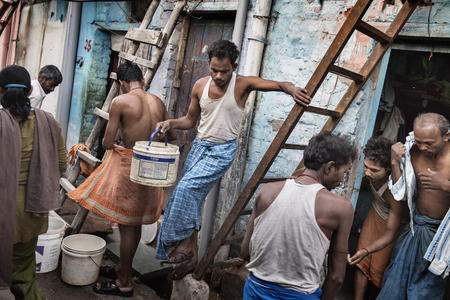Four years later and where are we? Assessing progress on SDG 6

As world leaders met at the SDG Summit on Tuesday and Wednesday to evaluate global progress of the Sustainable Development Goals, UN-appointed experts released a report reviewing progress toward the SDGs. Laurin Liu summarises the report's findings and looks at how SDG 6 can help accelerate achievement of other goals.
Anyone using the public entrance to the UN headquarters this week will be greeted with a huge display of all 17 Sustainable Development Goals (SDGs) mounted specifically for the UN General Assembly high-level week: a reminder to all delegations about pledges made in 2015 to work toward a common blueprint to achieve a better and more sustainable future for all.
2019 is an especially significant milestone for the SDGs, as world leaders met at the SDG Summit on Tuesday and Wednesday to evaluate global progress – the first meeting of a high-level event that will take place every four years. There is global consensus that governments have not been fast or ambitious enough in working toward the goals: in many areas of the SDGs, there is no progress at all. Progress on some SDGs, mostly related to greenhouse gas emissions and environmental degradation, are even seeing a backslide. As for SDG 6 (ensuring universal access to clean water and sanitation), progress remains too slow to meet the 2030 target.
How high are the stakes?
Meanwhile, we are already facing a looming water crisis: according to the World Resources Institute, 17 countries around the world – home to one-fourth of Earth’s population – are currently under extremely high water stress, meaning they are using almost all the water they have. Business as usual means that demand for water is expected to increase by 50 per cent by 2025, with 1.8 billion people experiencing absolute water scarcity, and two thirds of the world’s population living in water-stressed conditions.
Action on SDG 6 can accelerate the achievement of other development goals
To help governments make better decisions, a report by experts appointed by the UN Secretary General have identified multiple “entry points” to accelerate progress across multiple SDGs. Experts note that taking action in these areas where there are particularly strong interconnections and interdependencies across SDGs can be especially effective – creating a ripple effect that improves the lives of human beings.
Here’s how water fits into these entry points*:
Human wellbeing and capabilities: Experts have pointed out that people who lack water and sanitation also tend to be affected by other forms of poverty, including income poverty, poor health, and low levels of education. That’s why eradicating poverty and other forms of inequality isn’t just about money: it’s also about addressing these multidimensional and overlapping issues. Governments need to ensure universal access to quality basic services that are pro-poor and target individuals who are most likely to be left behind – women and girls, persons with disabilities, indigenous peoples and others.
Sustainable and just economies: Greta Thunberg made one thing clear in her address to the UN this week: we cannot continue with business as usual and unfettered economic growth. The overuse of our environmental resources is unsustainable when it comes to greenhouse gas emissions, water and land. A sustainable and just economy means one in which industrial activities do not come at the expense of the human rights to clean water and sanitation.
Food systems and nutrition patterns: We need to be smarter about how we make the food we consume. Globally, approximately 70 per cent of the fresh water used annually is for the production of food. In regions with limited water, agriculture often competes with human access to safely managed drinking water and sanitation services. In fact, restricting agricultural water consumption could have a much greater impact than reducing water consumption in households in places where there are water shortages.
Urban and peri-urban development: Cities use a lot of water. In fact, the water footprint of cities (the water they use) is about twenty times their physical footprint, or their land area. Cities are also places in which inequalities are most pronounced, meaning access to basic services like water and sanitation have to be pro-poor and ensure that no one is left behind. Cities are one of the most important places when it comes to bridging the last mile to those currently living without drinking water and sanitation services.
Global environmental commons: The global environmental commons refer to Earth’s shared resources –in other words, the atmosphere, the hydrosphere, the global ocean, the cryosphere, polar regions, large-scale biomes and natural resources systems such as forests, land, water and biodiversity. Experts have linked environmental degradation to the water crisis and freshwater availability, which means that restoring land is one way to raise groundwater levels and ensure that communities are more resilient to drought and water scarcity.
Read the full Global Sustainable Development Report 2019
*Additional entry points include "Energy decarbonization with universal access", "Science for sustainable development" and "Not incremental change but transformation".
Laurin Liu is Advocacy Coordinator for WaterAid America's Campaigns team.





